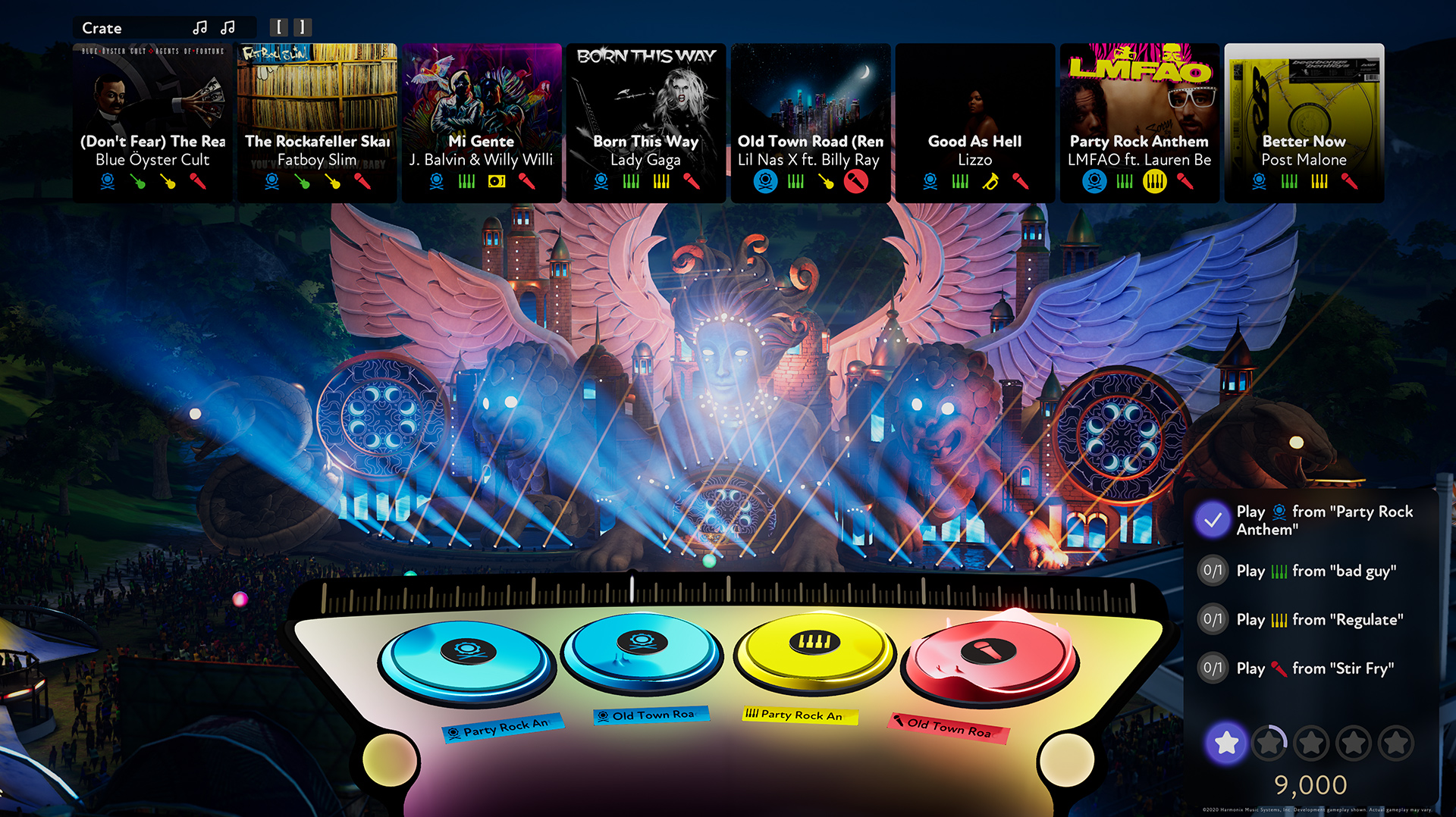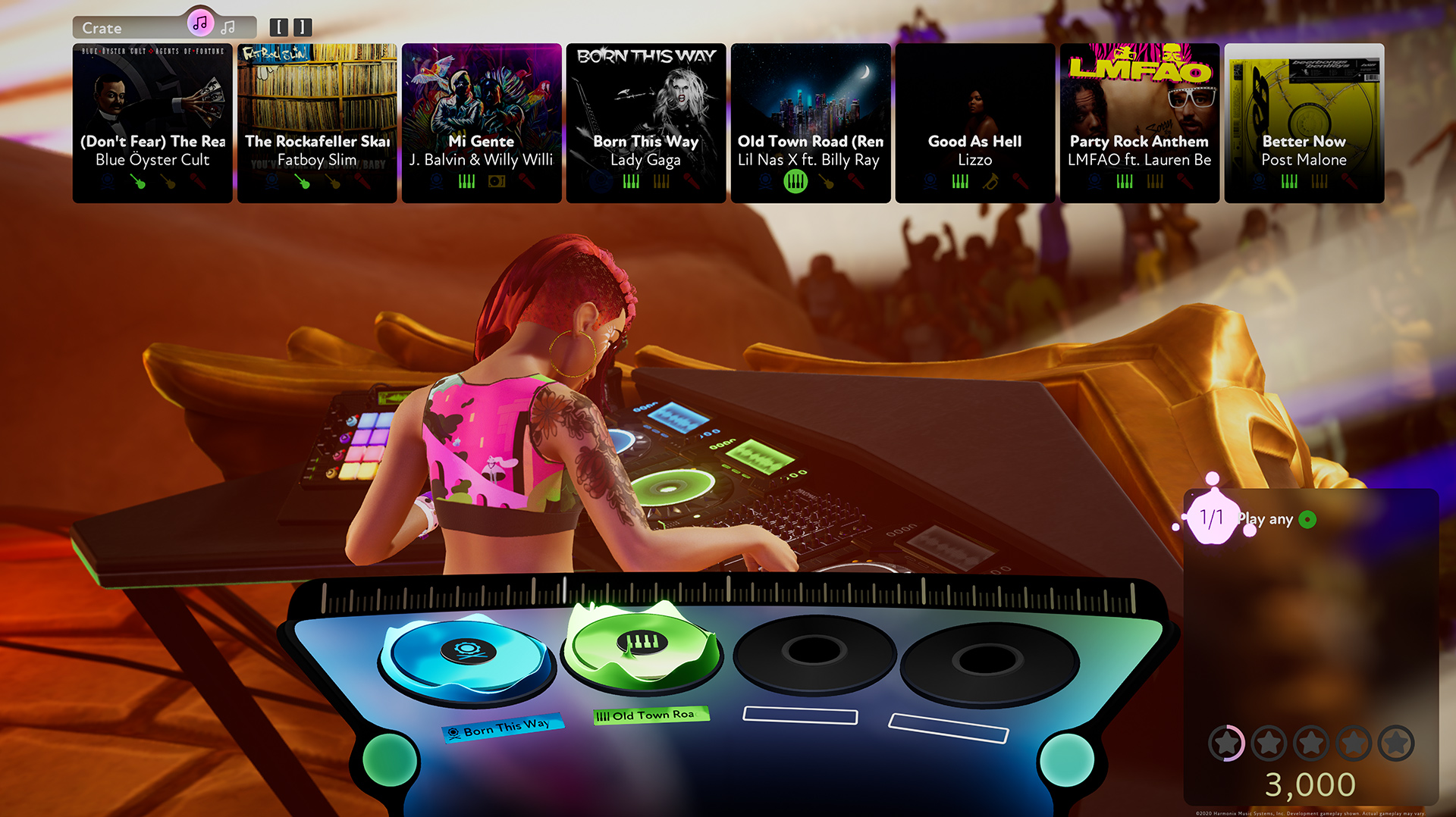Fuser could revive the whole rhythm game genre

BOSTON – Fuser will probably be a good game. That, in and of itself, isn’t so surprising. It comes from Harmonix, which is the studio that basically pioneered the rhythm game genre, with titles like Amplitude, Guitar Hero and Rock Band. But Fuser may also be the game that reignites the rhythm genre as a whole – and that would be rather remarkable. Not only is Fuser easy to learn and fun to play, but it also doesn’t require any special peripherals, making it Harmonix’s most accessible game in years.
I got to go hands-on with Fuser at PAX East 2020, and I honestly did not expect to like it as much as I did. After all, what I liked about Harmonix games was the fantasy of being a rock star. Fuser, on the other hand, is all about being a DJ – and that means you’re going to be dealing with a lot of pop and hip-hop. (There’s a little rock, for good measure, but not enough to sustain the whole game.) I have no interest in those two genres; what on Earth could Fuser offer me?
- PS5 and Xbox Series X lifecycles: How long will these new consoles last?
- The best PC games to play now
- GDC postponed due to coronavirus: What’s next?

Fuser gameplay
Quite a lot, as it turns out. My Fuser demo was relatively short, but it showed me everything I needed to know to play through a session of the game. As stated above, Fuser can turn you into a DJ for an adoring crowd. To do so, you’ll control four simultaneous music streams: one for percussion, one for a primary instrument, one for a rhythm instrument and one for vocals. Each stream is associated with one face button on a controller, meaning you’ll spend most of the game staring at spinning green, blue, yellow and red circles.
Where things get interesting, though, is that you can mix any four songs in the game’s playlist and come out a song that sounds incredibly cool. I don’t know exactly how Harmonix did it, but every single beat goes with every single vocal track; every single instrumental part works with every single rhythm part. No matter how outlandish your mix, it’ll probably sound like something that people could actually dance to.
For example: Once the game showed me how to manipulate all four streams at once (it’s incredibly easy; you literally just drag and drop track names), I decided to try mashing up four genres at once. With percussion from “Don’t Fear the Reaper” by Blue Oyster Cult, instrumentals from “Born This Way” by Lady Gaga, rhythm from “Don’t Let Me Down” by The Chainsmokers and vocals from “In Da Club” by 50 Cent, I was sure I’d wind up with something unlistenable. Instead, I found myself bouncing along with the beat, and wondering how else I could make an unexpected masterpiece.
Of course, the game isn’t just freestyle song-mixing – although I hope there will be a mode for that as well. Instead, the challenge in the game comes from two main sources: requests and downbeats. As you progress through a show, fans in the audience will all request different styles of music. Some might want horns in the rhythm section, or a rap song in vocals, or a song from the 2000s in any position. You have only a limited time to fulfill these requests, and they’ll often stack two or three on top of one another.
That alone might not be so hard, but you can’t just switch songs in and out at any time. Like an actual DJ, you’ll want to wait for the downbeat before changing tunes. Switch a song too early or too late, and even fans who requested the change won’t be thrilled with it. With four song positions, a variety of genres and instruments, constant fan requests and staying on rhythm, there’s a lot to balance. I think it’ll get easier as players start to memorize the track list – but in the demo, there were about a dozen songs. In the final game, there will be more than 100.
Get instant access to breaking news, the hottest reviews, great deals and helpful tips.

Fuser track list and outlook
Fuser track list and outlook
- 50 Cent - "In da club"
- Billie Eilish – “bad guy”
- Blue Öyster Cult – “(Don’t Fear) The Reaper”
- The Chainsmokers ft. Daya – “Don’t Let Me Down”
- The Clash – “Rock the Casbah”
- Fatboy Slim – “The Rockafeller Skank"
- Imagine Dragons – “Thunder”
- J. Balvin & Willy William – “Mi Gente”
- Lady Gaga – “Born This Way”
- Lil Nas X ft. Billy Ray Cyrus – “Old Town Road (Remix)”
- Lizzo – “Good As Hell”
- LMFAO ft. Lauren Bennett & GoonRock – “Party Rock Anthem”
- Migos – “Stir Fry”
- Post Malone – “Better Now”
- Smash Mouth – “All Star”
- Warren G & Nate Dogg – “Regulate”
The funny thing about Fuser is that if you watch a video of the gameplay, it doesn’t seem all that exciting. The music sounds cool, but there’s a lot of tedious record-switching without much of an immediate payoff. But I was absolutely hooked – and, judging by the massive crowds outside the Fuser booth, so was everyone else at PAX East.
If I had to guess, I would say that Fuser has such massive appeal because it creates something worth listening to almost effortlessly. Even at their best, Guitar Hero and Rock Band were just ways of recreating something that another person had already done perfectly. In Fuser, you get a chance to experiment – and unlike real DJ experiments, your results are guaranteed to sound great. It’s a safe and comfortable way to exercise your musical creativity.
If Fuser does well, I’d like to think that we could see a whole new generation of rhythm games. This time around, though, they’ll be creative outlets as much as simulators, and they won’t require expensive, space-consuming peripherals to play. Or perhaps Fuser will be a one-off experiment, in which case it will be all the more memorable for its uniqueness. The game will be out later this year for PC, PS4, Xbox One and Nintendo Switch, with no hard price announced just yet.

Marshall Honorof was a senior editor for Tom's Guide, overseeing the site's coverage of gaming hardware and software. He comes from a science writing background, having studied paleomammalogy, biological anthropology, and the history of science and technology. After hours, you can find him practicing taekwondo or doing deep dives on classic sci-fi.
